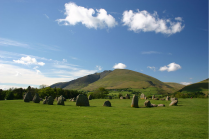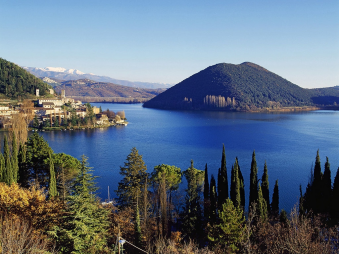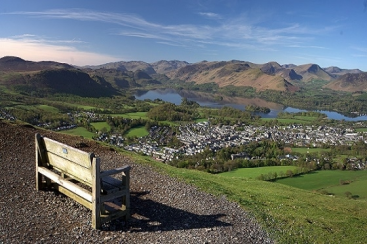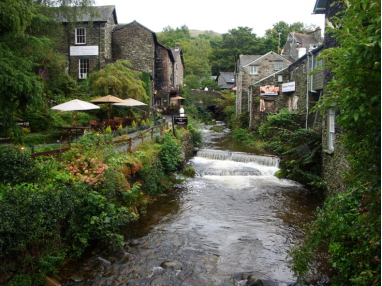Carlisle, Cumbria, England, UK 作者: 来源: 发布时间:2021-01-04
I. Population and Area
Continent: Europe
Country: The U.K
State/Province: England
City/Town: Carlisle, Cumbria
Total Area: 402 (sq mi)
Population in 2018: 19.23(thousand)
II. Natural Geography (environment and resources)

Bus
Several bus companies run services in Cumbria serving the main towns and villages in the county, with some services running to neighbouring areas such as Lancaster. Stagecoach North West is the largest; it has depots in Barrow-in-Furness, Carlisle, Kendal and Workington. Stagecoach's flagship X6 route connects Barrow-in-Furness and Kendal in south Cumbria.
Air
There are only two airports in the county: Carlisle Lake District and Barrow/Walney Island. Both airports formerly served scheduled passenger flights and both are proposing expansions and renovations to handle domestic and European flights in the near future. The nearest international airports to south Cumbria are Blackpool, Manchester and Liverpool John Lennon. North Cumbria is closer to Newcastle, Glasgow Prestwick and Glasgow International. Barrow-in-Furness is one of the country's largest shipbuilding centres, but the Port of Barrow is only minor, operated by Associated British Ports alongside the Port of Silloth in Allerdale. There are no ferry links from any port or harbour along the Cumbria coast.
Railway
The busiest railway stations in Cumbria are Carlisle, Barrow-in-Furness, Penrith and Oxenholme Lake District. The West Coast Main Line runs for 399 miles (642 km) through the Cumbria countryside, adjacent to the M6 motorway. The Cumbrian Coast Line connects Barrow-in-Furness to Carlisle and is a vital link in the west of the county. Other railways in Cumbria are the Windermere Branch Line, most of the Furness Line and much of the Settle-Carlisle Railway.
-Cumbria (/ˈkʌmbriə/ KUM-bree-ə) is a ceremonial and non-metropolitan county in North West England. The county and Cumbria County Council, its local government, came into existence in 1974 after the passage of the Local Government Act 1972. Cumbria's county town is Carlisle, in the north of the county;
-Cumbria is the most northwesterly county of England. The northernmost and southernmost points in Cumbria are just west of Deadwater, Northumberland and South Walney respectively. Kirkby Stephen (close to Tan Hill, North Yorkshire) and St Bees Head are the most easterly and westerly points of the county. Most of Cumbria is mountainous, with the majority of the county being situated in the Lake District while the Pennines, consisting of the Yorkshire Dales and the North Pennines, lie at the eastern and south-east areas of the county. At 978 metres (3,209 ft) Scafell Pike is the highest point in Cumbria and in England. Windermere is the largest natural lake in England.
-Cumbria is predominantly rural and contains the Lake District National Park, a UNESCO World Heritage Site considered one of England's finest areas of natural beauty, serving as inspiration for artists, writers, and musicians. A large area of the south-east of the county is within the Yorkshire Dales National Park, while the east of the county fringes the North Pennines AONB. Much of Cumbria is mountainous and it contains every peak in England over 3,000 feet (910 m) above sea level, with the top of Scafell Pike at 3,209 feet (978 m) being the highest point in England.
III. GDP
In 2013:10,791 (£m)
IV. Industrial Characterisitics
Major industries:Shipbuilding/Mining
Big project:Nugeneration Limited project
Details: This proposal is for the construction and operation of a new nuclear power station on land adjacent to the existing Sellafield site.It is estimated that the project will create more than 20,000 jobs during its lifetime, and when built it will generate around 7% of the nation's electricity.
Other project:
-Barrow's shipyard is one of the UK's largest. BAE Systems is the current owner and employs around 5,000.
Associated British Ports Holdings own and operate the port of Barrow.
The only Kimberly-Clark mill in the North of England is located in Barrow.
James Fisher & Sons, a large provider of marine engineering services, is based in Barrow.
One of the largest single-site furniture stores in the UK, Stollers, is located in Barrow.
Close to 1,000 people work in one of only two Pirelli tyre plants in the UK.
Carr's is a successful foodstuff and agricultural brand that was established in 1831 in Carlisle.
Stobart Group owns the Carlisle Lake District Airport and its rail maintenance business is based in Carlisle.
Eddie Stobart, which is one of the UK's largest logistics companies, used to be headquartered in Carlisle.
Nestlé operates a factory on the outskirts of Carlisle.
Cavaghan & Gray (owned by the by 2 Sisters Food Group) is a food manufacturing business based in Carlisle and a significant employer in the city.
Crown Holdings owns two factories in Carlisle, locally known as 'Metal Box'. Both factories make products for the beverage industry.
Edinburgh Woollen Mill announced plans to move their HQ from Langholm, Scottish Borders to Carlisle.
V. Attractions
1. Lake District:

England’s highest mountain, Scafell Pike is in the west of the Lake District and there are scores of hills, known as ‘fells’ for hardy walkers to test their mettle.
The lakes themselves are magnificent finger-like sheets of reflective waters.
The largest of them, Windermere and Ullswater, are crossed by pleasure boats and ferries, and most are watersports heaven.
In the evenings you can crash in adorable villages and towns like Keswick, Ambleside and Grasmere, which have catered to the whims of tourists for hundreds of years
There aren’t many regions in the world as intrinsically linked with a person as the Lake District is with the poet William Wordsworth.
2. Keswick:

There’s a large roll-call of pubs and restaurants for warming meals in the evenings, and charming streets with cute shops to welcome you back to civilisation.
The town is a sort of base camp for rugged outdoors types, close to the head of Derwent water and in the shadow of Cat Bells, one of the Lake District’s most treasured walking spots.
Honister Slate Mine has been producing slate for almost 300 years, and you can go to look around the nave-like tunnels and cross a via ferrata.
3. Ambleside:

At the northern shore of the mighty Windermere, Ambleside is a Lake District town to fall in love with at first sight.
Many of the Victorian stone-built houses are hotels and bed & breakfasts for outbound hikers, or people out to recharge their batteries floating on Windermere by steamer or under their own power.
A raft of historic figures have lived or worked in this town, and the Armitt Museum has exhibits about Ambleside’s ties to William Wordsworth and children’s author Beatrix Potter.
VI. History
The county of Cumbria was created in April 1974 through an amalgamation of the administrative counties of Cumberland and Westmorland, to which parts of Lancashire (the area known as Lancashire North of the Sands) and the West Riding of Yorkshire were added.
During the Neolithic period the area contained an important centre of stone axe production (the so-called 'Langdale Axe Factory'), products of which have been found across Great Britain.[3] During this period stone circles and henges were built across the county and today 'Cumbria has one of the largest number of preserved field monuments in England.
While not part of the region conquered in the Romans' initial conquest of Britain in AD 43, most of modern-day Cumbria was later conquered in response to a revolt deposing the Roman-aligned ruler of the Brigantes in AD 69. The Romans built a number of fortifications in the area during their occupation, the most famous being UNESCO World Heritage Site Hadrian's Wall which passes through northern Cumbria.
VII. Culture
Cumbria is predominantly rural and contains the Lake District National Park, a UNESCO World Heritage Site considered one of England's finest areas of natural beauty, serving as inspiration for artists, writers, and musicians. A large area of the south-east of the county is within the Yorkshire Dales National Park, while the east of the county fringes the North Pennines AONB. Much of Cumbria is mountainous and it contains every peak in England over 3,000 feet (910 m) above sea level, with the top of Scafell Pike at 3,209 feet (978 m) being the highest point in England. An upland, coastal and rural area, Cumbria's history is characterised by invasions, migration and settlement, as well as battles and skirmishes between the English and the Scots. Notable historic sites in Cumbria include Carlisle Castle, Furness Abbey, Hardknott Roman Fort, Brough Castle and Hadrian's Wall (also a World Heritage Site).
VIII. Other information
The largest and most widespread industry in Cumbria is tourism. The Lake District National Park alone receives some 15.8 million visitors every year. Despite this, fewer than 50,000 people reside permanently within the Lake District – mostly in Ambleside, Bowness-on-Windermere, Coniston, Keswick, Grasmere and Windermere. Over 36,000 Cumbrians are employed in the tourism industry which adds £1.1 billion a year to the county's economy. The Lake District and county as a whole attracts visitors from across the UK, Europe, North America and the Far East (particularly Japan). The tables below show the twenty most-visited attractions in Cumbria in 2009 (please note that not all visitor attractions provided data to Cumbria Tourism who collated the list. Notable examples are Furness Abbey, the Lakes Aquarium and South Lakes Safari Zoo, the latter of which would almost certainly rank within the top five).
IX. Contact information
Mayor/Officer: Jessica Riddle
Tel: 0345 6780599
Web: http://www.accentgroup.org/
Cumbria Crystal
Greatdale Limited
Unit 4, Canal Head
Ulverston, Cumbria LA12 7LB
Tel +44 (0)1229 584400
Fax +44 (0)1229 581132
General – info@cumbriacrystal.com
